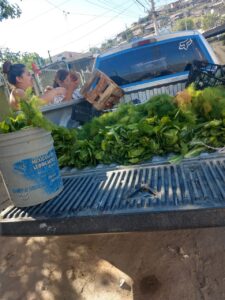Our response to poverty and how we carryout poverty alleviation plans matters. We have a desire to help in a productive way, and not enable or make worse someone’s situation in the long-run. How can we do this?
First, it helps to determine what type of poverty alleviation effort is appropriate: relief, rehabilitation, or development. This classification was pioneered in the best-selling book, When Helping Hurts.
- Relief is characterized by an urgent need that people are incapable of fulfilling themselves typically due to a one-time crisis (think COVID-19 sickness or food shortage).
- Rehabilitation occurs when people have recovered their bearings and can start to actively be part of their own solution (think active job searching after unexpected job loss). This continues until they return to pre-crisis conditions.
- Development describes the growth that someone has above and beyond their pre-crisis state (think moving into a nicer house due to years of dedicated job growth or being able to provide education opportunities to their children that were unattainable for themselves). Development can take years to materialize and even span generations in the same family.

Another key distinction between these poverty alleviation strategies is that relief is typically done to someone and rehabilitation and development are done with someone (learn more from The Chalmers Center).
Within the current context of COVID-19 in Tijuana, Doxa’s response has been a mixture of relief and rehabilitation. Relief efforts have included food distribution to community households, special emergency funding to orphanages, and the provision of face masks. The procurement process for the food and face masks has been rehabilitation as we source these items locally. Partnering with a local farmer, produce vendor, and larger grocery stores to give them all needed business. Repurposing our house curtain maker, Luis, to instead make hundreds of face masks during this time. Additionally, when legally allowed to resume house building, Doxa will be employing local people to build houses. Another example of rehabilitation efforts.

100 new masks 
Fresh produce arriving 
Grocery distribution
Even without the challenging times of COVID-19, it can be hard to accurately respond to poverty. For some it evokes an emotional and spiritual reaction and for others an alarming panic and urgency to just do something. If we’re not careful, however, the wrong application can lead to long-term harm. As the situation around COVID-19 further develops and gradually comes to an end, there will be another difficult decision-point on the horizon. When to stop relief efforts before they start to do harm?
